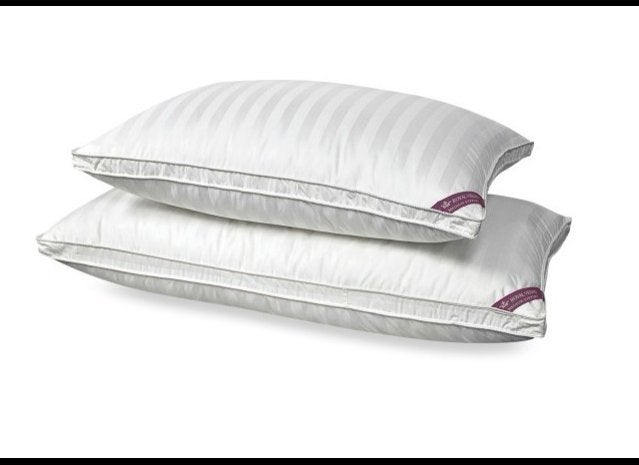You might think that the key to a good night's sleep is a good mattress or a futon (which is important and true), but the pillow that you rest your head on is just as crucial. We've all woken up with a crick in the neck feeling unrested and groggy, and that has everything to do with your pillow(s).
The right pillow should comfortably provide support for your head and your neck, and it shouldn't deflate or lose its fluffiness quickly.
Whether it's goose down-filled or Tempur-Pedic, here are some basic notes to keep an eye out for when you're scavenging January's white sales for a new one or simply looking to switch out your old ones.
Know the pillow fill. The most common fills for pillows are down feathers, synthetic/polyester fibers and foam. Natural goose down feather pillows are long-lasting and excellent in terms of comfort, so that's what we would go for even though they can be a bit pricey. A more cost-friendly option would be synthetic/polyester fiber pillows, which are generally hypoallergenic, feels like down and are machine washable. For firmer support, spongy memory foam and Tempur-Pedic pillows are the way to go. But foam pillows are known to retain heat, so if you sweat easily we suggest you shy away.
Consider thread counts. Simply put, the higher the thread count in a pillow the more durable and plush it will feel. However, we've found that a standard-size 20" by 26" pillow with a 300 thread count is cost-efficient and comfortable to sleep on. But if you're looking for something more luxurious, we'd go with a pillow that has 500-800 thread counts. Of course, 1,000 thread count pillows are great, but you'll also be paying a hefty price for it.
The fluff factor. A fluffier a pillow provides better cushioning and is longer lasting. A fluffy pillow also means that fresh air is still able to travel through it. Contrastingly, a lifeless one that's deflated and flat signifies that the pillow can no longer trap air, rendering it not ideal for giving comfortable support. To test fluffiness, fold a pillow in half and see if it unfolds on its own or give it a big hug and see if it fluffs back up. If not, you might have to look for a new pillow.
Sleeping position matters. Finally, how you position yourself in bed can really determine the type of pillow you'll need. For example, if you sleep on your back, make sure you get a fluffier pillow that lifts your head and chin, which can help with breathing and snoring.
Click through our slideshow below to find some of our favorite picks for pillows that feel right:
